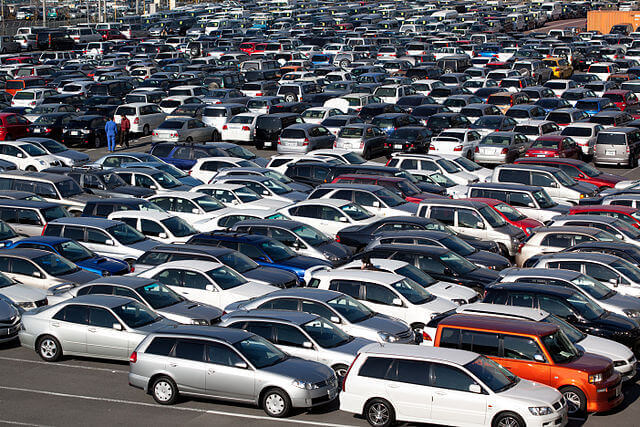Looking at Africa over the last 50 years, a lot has happened. The infrastructure has improved and now you can proudly drive on the smooth highways. Ok, we are not there yet, but we will soon be, by the way things are going. This is good news to major used car exporters like Japan, as it means that they will have a larger market for their cars.
With the Continent opening up to trade, most of the goods in the continent are transported by road. There is high demand for vehicles to help enhance the growing economies.
Apart from the commercial side of the car and truck trade, there is a fast growing middle class in Africa. This will play a very big role in the way that the continent imports vehicles. No one in the leafy suburbs of Nairobi, Lagos, Casablanca or Cairo wants to be caught driving a jalopy. High-end carmakers and exporters are set to enjoy more business from Africa. According to Dan Akerson, the General Motors CEO in 2014 alone, it is estimated that vehicle sales to Africa will hit 2 million units.
While most of the car sales go to North and south of the continent, other impoverished nations in Africa are also coming up fast. The challenge for many carmakers now is to produce cars that can prove resilient to the terrains and climatic conditions of Africa.
In the year 2012, Japan sold over 230,000 units in Africa. General Motors sold about 180,000 units. This, although not as high as manufacturers would like, is still very impressive. The good thing is that about 50 years since we gained independence, Africa is now showing potential as a market, despite the stubborn odds stacked against her.
Stable political climate
This is where the buck stops. A stable political climate means that the environment for investment can be enhanced. Foreign as well as local investors are bound to invest more, agriculture can thrive and more people can afford vehicles, which by the way, are taxed as luxury products. With more countries embracing liberal and social democracy, the standards of living are going up. Good examples for this include South Africa, Ghana, Mauritania and Nigeria.
There are very attractive prospects for carmakers and Nigeria is one of them. It is the most populous nation in the continent. South Africa is also one of the chief importers, manufacturers and assemblers in Africa, followed closely by Egypt, Libya and other North Africa Nations. We can also expect more demand for cars in East Africa from Kenya, Tanzania and others.
Improved lifestyles
More resources being discovered in the continent mean good news. For example, oil resources in Kenya and Uganda mean that more money will be pumped into the economies. Buying power will be improved for the people. Therefore, more Japanese secondhand cars will be imported. Soon, cars will not be classified under “luxury”. They will be a necessity.








There are two main drivers that will increase car sales and make Africa increasingly important within the global automotive market.
In the medium term it is the increasing size of the middle class that you mentioned. It has been widely reported how sales purchases are driven by GDP per capita but not linearly – they follow a Gompertz curve. Sales volumes increase slowly until GDP per capita reaches about USD 3,000. Then sales volumes increase rapidly until USD 10,000 and then the growth levels out. Right now, Nigeria is at about USD 3,000 – and as the most populous nation, Nigeria is going to have a disproportionate effect on the overall Africa numbers. It will be a good few years before many of the other nations kick in though – a large number are still below USD 2,000. I refer to this phenomenon as medium term because, on a global scale, the short term will remain to be dominated by Asia, where many nations are currently climbing from 3,000 to 10,000.
In the long term it is the population growth. Current predictions are that population growth on all other continents will begin to decline from around 2040. Thus from 2040, Africans will become a growing proportion of the world population. Thus from 2060, Africans will become a growing proportion of the world driving population.
For automakers looking at the long game, they need to look to Africa.